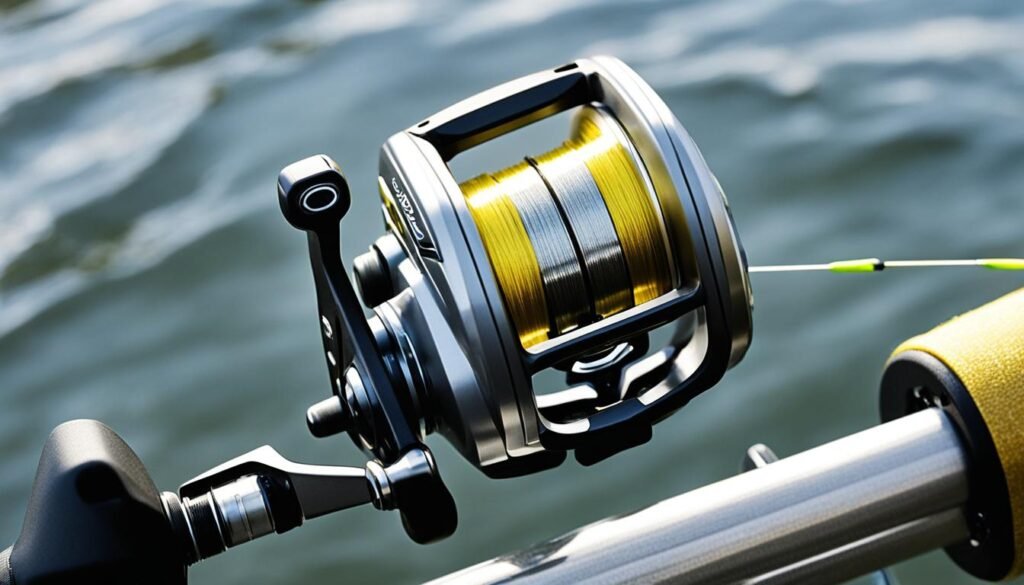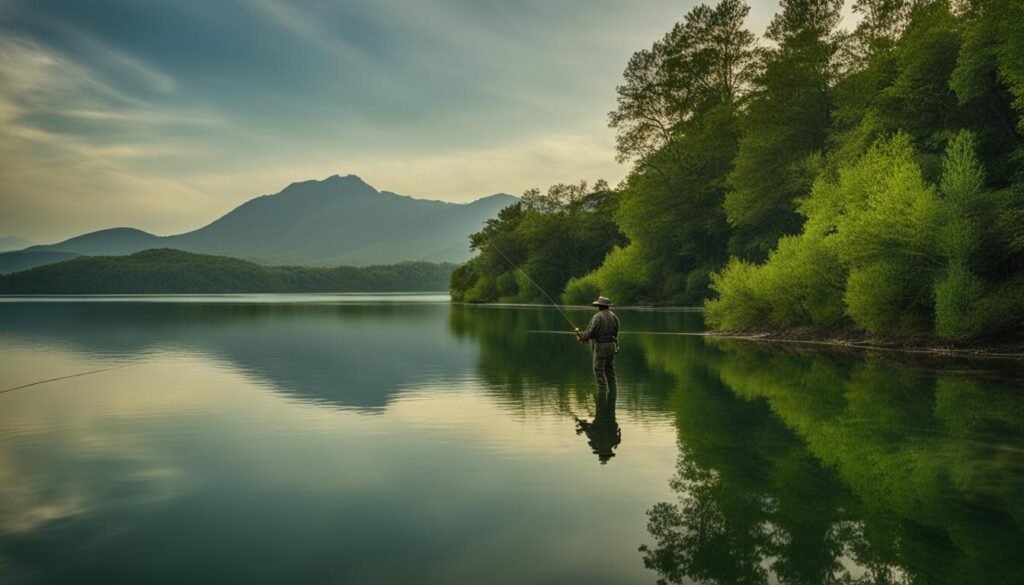Catching your first bass can be an exciting and rewarding experience. Whether you’re a beginner or have some fishing experience, this article will provide you with the ultimate tips for success. From understanding bass behavior to selecting the right gear and lures, we’ll cover everything you need to know to increase your chances of reeling in that elusive bass.

Understanding Bass Behavior and Ideal Fishing Times
To successfully catch bass, it’s essential to understand their behavior and know the ideal fishing times. Bass are most active during certain periods of the day, such as dawn and dusk. These early and late hours, also known as the dawn and dusk bite, are prime times for catching bass because they are more likely to be feeding.
The Dawn and Dusk Bite: Why Early and Late Hours are Prime
During the dawn and dusk bite, bass are more active and readily searching for prey. The low light conditions provide them with an advantage as they move closer to the water surface to feed. Take advantage of this behavior by planning your fishing trips during these hours for the highest chance of success.
Bass Habitats: Key Spots Where They Lurk
Bass have specific habitats where they prefer to lurk and ambush their prey. Some of these key spots include docks, lily pads, submerged logs, and vegetation. These locations provide cover and serve as hiding places for bass, making them an ideal target for anglers. Paying attention to these habitats will increase your chances of finding and catching bass.
Temperature and Weather Patterns: How They Affect Bass Activity
Temperature and weather patterns play a significant role in bass activity. Bass are cold-blooded creatures, and their metabolism and feeding patterns are influenced by water temperature. They are more active and likely to feed when the water temperature is favorable. Additionally, weather changes such as fronts, rain, and wind can also impact their behavior. Understanding these temperature and weather patterns will help you plan your fishing trips more effectively.
Choosing the Right Bass Fishing Gear

Choosing the right bass fishing gear is essential for a successful fishing experience. To maximize your chances of reeling in that trophy bass, it’s important to select the appropriate fishing rod, fishing reel, fishing line, and fishing accessories. Here’s a step-by-step guide to help you make the right choices:
1. Fishing Rods
When it comes to bass fishing rods, consider factors such as length, action, and power. Longer rods provide better casting distance, while shorter rods offer increased accuracy. The action of the rod determines its flexibility, with fast action rods providing more sensitivity and control. For bass fishing, medium-heavy or heavy power rods are recommended to handle the fight of a big bass.
2. Fishing Reels
There are various types of fishing reels available, such as spinning reels and baitcasting reels. Spinning reels are user-friendly, making them a popular choice for beginners. Baitcasting reels, on the other hand, offer more control and accuracy for experienced anglers. Consider the gear ratio, line capacity, and drag system when selecting a fishing reel for bass fishing.
3. Fishing Lines
The right fishing line can make a significant difference in your bass fishing success. Monofilament lines are versatile and affordable, making them a popular choice for bass fishing. Fluorocarbon lines are nearly invisible underwater and have low stretch properties, providing better sensitivity. Braided lines offer exceptional strength and sensitivity, but they can be more visible in clear waters. Choose a line that suits your fishing style and the conditions you’ll be fishing in.
4. Fishing Accessories
Aside from rods, reels, and lines, there are several fishing accessories that can enhance your bass fishing experience. A good set of hooks, weights, and bobbers are essential for rigging your bait effectively. Crankbaits, plastic worms, and spinnerbaits are among the most popular bass fishing lures. Don’t forget to have a suitable tackle box to keep your accessories organized and easily accessible.
By choosing the right bass fishing gear, you’ll be well-equipped to handle any bass fishing challenge. Remember to consider factors like the type of fishing you’ll be doing, your experience level, and your budget when making your gear selections. Now that you have your gear ready, it’s time to hit the water and start reeling in those trophy bass!
Bass Fishing Techniques: A Guide to Successful Angling

Mastering bass fishing techniques is key to becoming a successful angler. In this section, we’ll provide you with a comprehensive guide to various bass fishing techniques that will help you enhance your angling skills.
Mastering the Cast: Tips for Accuracy and Distance
One of the essential skills in bass fishing is mastering your cast. To improve accuracy and distance, follow these tips:
- Use proper grip and stance: Hold the rod firmly with your dominant hand and stand with your feet shoulder-width apart for better balance.
- Focus on your target: Look at the spot where you want your lure to land and keep your eyes on it throughout the cast.
- Utilize the power of your wrist: Use a smooth, fluid motion to generate power and release the lure at the right moment.
- Practice different casting techniques: Experiment with overhead casts, sidearm casts, and roll casts to find the technique that works best for you.
Retrieval Patterns Explained: How to Entice a Strike
Understanding retrieval patterns is crucial for enticing strikes from bass. Try these techniques to vary the motion of your lure and trigger a reaction:
- Slow and steady retrieve: Reel in your lure at a consistent speed to imitate a natural swimming motion.
- Stop-and-go retrieve: Pause the retrieval intermittently to mimic a wounded or injured prey, which can attract aggressive bass.
- Jerk and twitch retrieve: Make abrupt, jerking motions with your rod tip to create an erratic and enticing action that can provoke a strike.
- Burn retrieve: Reel in your lure rapidly to simulate a fleeing baitfish, triggering a predatory response from bass.
Handling Missed Bites: Quick Reaction Strategies
Missed bites are a common occurrence in bass fishing, but don’t let them discourage you. Employ these quick reaction strategies to maximize your chances of hooking a bass:
- Stay calm and focused: Maintain composure and be ready for another opportunity.
- Jerk the rod tip: If you feel a nibble or see a subtle movement, swiftly pull your rod tip upward to set the hook and solidify the bite.
- Switch to a different lure: Bass can be picky, so try changing your lure to entice a strike.
- Adjust your retrieval speed: Experiment with slower or faster retrieve rates to find the sweet spot that triggers a bite.
How to Catch Bass: Selecting the Most Effective Lures and Bait
Selecting the most effective lures and bait is essential for catching bass. In this section, we’ll explore different types of lures and baits that have proven to be successful in bass fishing.
Soft Plastic Baits: The Role of Stickworms and Creature Baits
Soft plastic baits are a go-to choice for many bass anglers due to their versatility and ability to mimic natural prey. Stickworms, such as the popular Senko by Yamamoto, are known for their enticing action and realistic appearance in the water. These bait options work effectively in a variety of fishing scenarios, making them a must-have in your tackle box.
Another soft plastic bait that bass can’t resist is creature baits. These baits are designed to imitate various creatures, such as crawfish or lizards, which are a staple in a bass’s diet. The Zoom Brush Hog is a prime example of a creature bait that can entice bass strikes. Experimenting with different sizes, colors, and rigging techniques will help you find the winning combination for your bass fishing adventures.
Surface Lures: Making the Most of Topwater Tactics
Surface lures are highly effective for enticing bass strikes and generating exhilarating topwater action. These lures create a commotion on the water’s surface, mimicking wounded prey and triggering bass’s predatory instincts. Popular surface lures for bass fishing include topwater poppers, buzzbaits, and walking baits like the iconic Zara Spook. By mastering the art of working these lures correctly, you can create explosive moments on the water and increase your chances of catching bass.
Jigs and Spinnerbaits: Utilizing Versatile Subsurface Options
When bass are not actively feeding on the surface, it’s time to switch to subsurface options like jigs and spinnerbaits. Jigs are versatile lures that can be fished effectively at various depths and in different cover types. They come in different styles, including football jigs, swim jigs, and flipping jigs, allowing you to adapt to the conditions and target bass in different situations.
Spinnerbaits are another excellent choice for subsurface fishing. These lures consist of a metal blade that rotates as it moves through the water, creating vibration and flash that attract bass. They are particularly effective in stained or murky water conditions. Colors, blade types, and trailer combinations can all be customized to entice bass strikes.
Best Bass Fishing Spots and How to Find Them
Finding the best bass fishing spots is essential for maximizing your chances of success. Whether you’re a beginner or an experienced angler, knowing how to find the right fishing locations can greatly improve your fishing experience. The good news is that bass can be found in various bodies of water, including ponds, lakes, rivers, and canals across the United States.
When searching for bass, pay attention to certain factors that attract them. Water depth is an important consideration, as bass prefer areas with varying depths, such as drop-offs and ledges, where they can find cover and ambush their prey. Look for structures like submerged rocks, fallen trees, and vegetation, as bass tend to congregate around these areas.
Additionally, keep in mind the time of year and the current weather conditions. During warmer months, bass may seek shelter in shaded areas or near cooler water sources, while they may move to shallower waters in cooler months. Understanding these patterns can help you narrow down your search for the best bass fishing spots.
Lastly, consider the fishing pressure in the area. Highly pressured spots are often frequented by other anglers and may have fewer active bass. Instead, try to find secluded and less crowded locations where bass are less wary and more likely to bite. Exploring new fishing spots and adapting to changing conditions will ultimately lead you to the best bass fishing spots.
Looking For More Bass Fishing Guide?
Check out our other bass fishing articles on our bass fishing hub.
